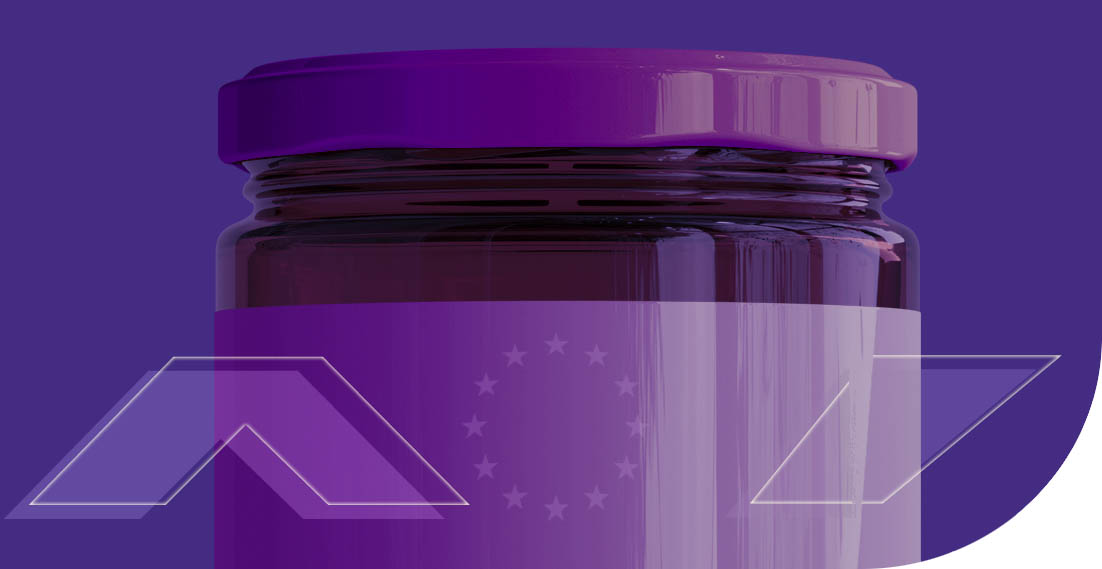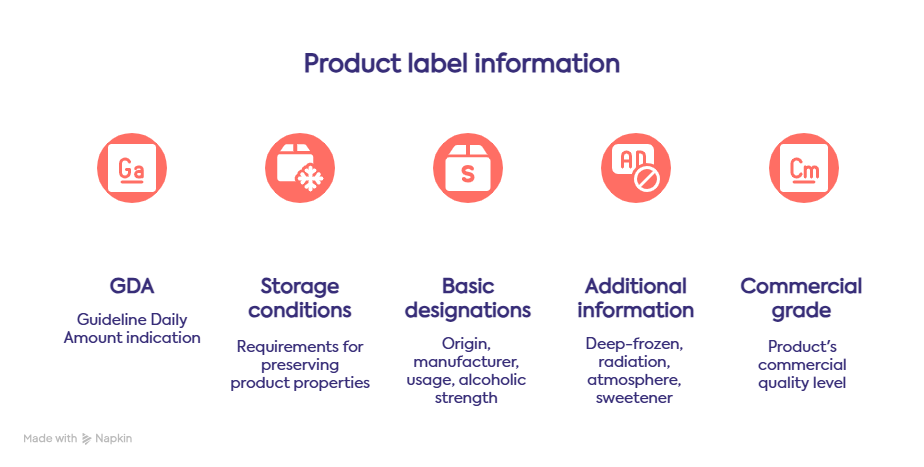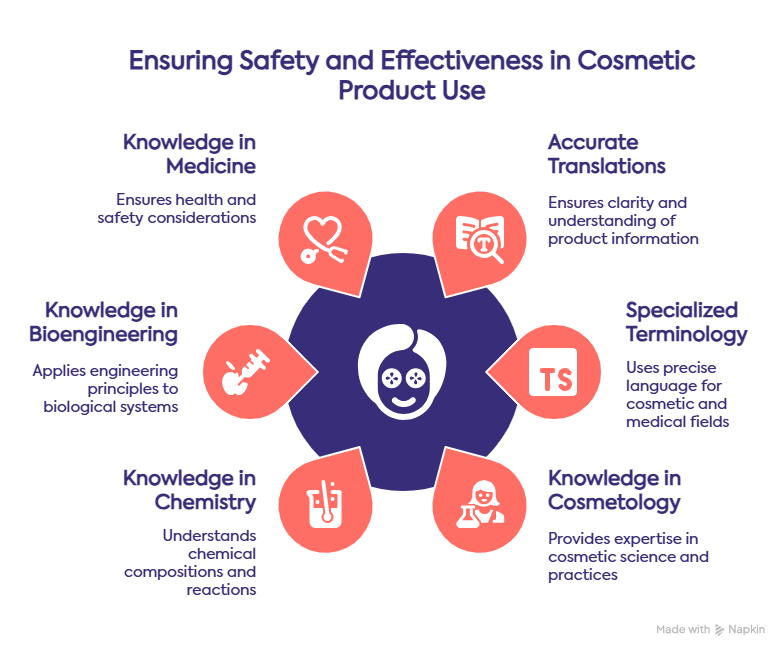Label translation: your key to global market success for every product

The importance of accurate label translation service for your product
Labels placed on products are a very important tool not only for marketing, but also for information purposes. The product label contains a lot of information important from the point of view of the recipient and it has a significant impact on his/her purchasing decisions. A label is a source of product information, therefore, in addition to attractive graphics or colours, it must present reliable product data. Regulation (EU) No. 1169/2011 of the European Parliament and of the Council of 25 October 2011 on the provision of food information to consumers, regulates, among other things, how a food product should be labelled.
The information on the label must be legible and easy for the buyer to find, while being clear and understandable. The customer must not be misled by erroneous or unclear labelling of the product. In addition, Polish law stipulates that all labels must be written in Polish and have additional markings required by separate regulations, e.g. conformity mark, safety mark, information on the product’s release for trade or its energy consumption. Our translation service specializes in ensuring compliant label translation, crucial for every product entering a new market.
Label trabslation? Choose our translation service
Essential components of a label and best practices for translation
Each product must be labelled in an appropriate manner that is compliant with the applicable laws. A professional translation agency can help you ensure all translation requirements are met.
Product name: ensuring clarity through proper translation
It is covered by the regulations or it is defined in a customary manner to be understandable to consumers. If the product has neither a common name nor a legal name, a descriptive name should be used (e.g. crunchy biscuits with cream). The food ingredient suggested in the name (e.g. peanut, 2 types of grains) must also be included in the product’s composition along with the percentage of this ingredient.
What should the name of the food product contain on the label? The name of the food should appear on the label, according to the regulations. When it is not specified in any regulations, the common name is used. When a common name does not exist, a descriptive name should be used. In practice, many restaurants use fancy names that are not clear to consumers, e.g. Sea breeze under fluffy clouds. The use of such a name itself is an error. A description should be added to the name explaining what the product is, e.g. Sea breeze under fluffy clouds – soft cake with cream-flavoured pudding and white chocolate glazing. This level of detail in product translation is vital.
List of ingredients: The Foundation of Accurate Label Translation
The list of ingredients must be preceded by the word “ingredients” visible on the label. The use of the word “composition” is a mistake. The ingredients should be listed in descending order. In the case of ingredients that are present in the finished product in an amount less than 2%, you can specify them in any order.
The list of ingredients can be shortened. Instead of giving the specific ingredient names, a generic category name may be used. Example: If the amount of spices does not exceed 2% by weight of the product, the general term “spices” or “spice mix” may be used instead of listing the individual spices in order. Another mandatory part of the label is the list of ingredients. Its specification is not necessary only for certain products (e.g. fresh produce).
Quantitative indication of ingredients in a food product
If an ingredient is listed in its name, indicate the percentage of that ingredient in the list of ingredients. Example: Name: Pumpkin Hummus Ingredients: pumpkin (50%), chickpeas (15%), olive oil, oranges, lemons, sugar, butter, spices.
The percentage of an ingredient should also be given when: – the product is associated with a given ingredient, e.g. nut ice cream – enter the percentage of nuts, – the ingredient is shown in the form of an image, – the ingredient describes the characteristics of a given product and allows it to be distinguished from other products, e.g. meat content in a pâté. This precise translation ensures transparency for the consumer.
Compound ingredient – proper description on labels
The most common error on labels is the lack of breakdown of a compound ingredient in the list of ingredients. When naming a compound ingredient, e.g. chocolate, all ingredients in its composition should be listed next to it in parentheses. Example: Name: Chocolate cake Ingredients: cream, plain chocolate (cocoa mass, cocoa, cocoa butter, emulsifier: soya lecithin), eggs, sugar, wheat flour, cocoa.
Allergens: critical for consumer safety and compliance
Allergens that need to be listed obligatorily include for example: Cereals containing gluten (wheat, spelt, rye, barley, oats), Crustaceans Eggs Fish Peanuts Soybeans Milk Nuts Celery Mustard seeds Sesame Sulphites Lupine Molluscs
Only the names of allergens may be highlighted, enlarged or bold, even in the case of ingredients composed of e.g. two words (wheat flour, powdered eggs). This helps ensure compliance with language requirements.
The label also lists other allergens that may be contained in the product, even in trace amounts. When declaring the possibility of other allergenic ingredients included in the product, use the appropriate wording, i.e. “may contain …” or “possible content of …”. Including the following phrase “contains trace amounts of …” on a label or information about allergenic ingredients present in a restaurant/plant is a mistake. Professional food label translation services are essential to avoid such critical errors.

Nutritional information: a clear product overview
The nutritional value, i.e. the energy value, fat content (including saturated, monounsaturated and polyunsaturated fatty acids), carbohydrates (including sugars, polyhydric alcohols, starch), salt, fibre, protein or certain vitamins and minerals must appear on the label if they are present in significant quantities in the product. The nutrition declaration has the form of a table. If there is no space on the packaging, such data can be presented in the form of continuous text. Nutritional information does not have to be found on, among others, unprocessed products, water, coffee, tea, herbs, spices, salt, food additives or chewing gums.
Net quantity of the product
For ice cream, mayonnaise, liquid seasoning, thick sauces, fermented milk products and condensed milk, the net amount may be given in units of weight (grams, kilograms) or volume (litres, millilitres).
‘USE BY…’ OR ‘BEST BEFORE…’ – navigating translation for shelf life
‘Use by’ and ‘best before’ are often confused on the label. The term ‘use by’ applies to perishable products, so-called microbiologically unstable products. For these products, the words ‘use by’ (dd/mm/yyyy) should be used on the label.
For other products, the ‘best before’ should be specified. The date of minimum shelf life is preceded by ‘best before (dd/mm/yyyy)’.
The date of minimum shelf life determines the time until which all specific properties (taste, smell, appearance) of the product are preserved. Food consumption after the date of minimum shelf life should not cause adverse health effects for consumers. After the date of minimum shelf life, the quality of the product may change, e.g. a white coating of fat and sugar will appear on chocolate, which is harmless to health. In turn, the ‘use by’ date indicates the moment after which the product may become harmful to the health of consumers. Accurate translation of these terms is vital to prevent product recalls and ensure consumer safety.
Information on storage conditions / use of the food product
The label should include information about the storage conditions not only of the sealed product, but also the conditions under which it should be kept after opening – often the latter is omitted by restaurant owners.
The label should also indicate whether the product is ready for consumption or requires prior preparation. Usage instructions cannot consist solely of graphics, e.g. an image of a pan or microwave, which is often practiced. A brief description should be provided to explain how the product is prepared.
Other essential product label information
GDA (Guideline Daily Amount) may be an additional indication on the label. This provides consumers with information about the energy value of the product. GDA has been developed by scientists for the average person, i.e. a healthy person with a healthy body weight. Thanks to this, it is possible to estimate the demand for nutrients and energy, and the value given as a percentage allows for checking what part of the GDA will be covered by a given product. The way of presenting information in a graphic format is very clear and useful.
The above terms are related to the information on the storage conditions (e.g. in a dry and cool place). Following these requirements guarantees the preservation of the product’s properties. The other basic product designations include country or place of origin, manufacturer’s name and address, conditions for use, and alcoholic strength (if applicable). All information must be expressed in the target language. In addition, the label should indicate if the product is deep-frozen, treated with ionizing radiation, packaged in a protective atmosphere or contains a sweetener, etc. Sometimes the commercial grade of the product is also required.

Additional information and markings: enhancing your brand through packaging translation
If the food products meet specific requirements, additional information may be provided on labels, e.g. geographical indications or indications provided for in European or national law.
Besides the elements listed above, it should be remembered that the label should also be visually attractive. Baby food products are labelled in pastel colours and decorated with images related to children. They should be appropriate for the given family of products from which a product originates. The label is an element of goods and advertising. Its effectiveness contributes to sales, therefore it is a necessary element and can be an incentive to buy a product. This requires a deep understanding of cultural nuances in localisation.
Common label translation errors and how to avoid them
Errors when labelling food products can severely impact compliance and market acceptance.
- Errors related to the product name. For example, if strawberry-flavoured yoghurt is called “strawberry yoghurt” and does not contain strawberries, such a name is not acceptable because it misleads the consumer as to the specific fruit content of the product. Providing only the trade name of the product (e.g. Oreo) is also incorrect, if it is not completed with the name for a given product category (e.g. sandwich cookies with creme filling).
- Mistakes often happen when specifying information about allergens. Some producers still do not emphasise foods containing allergenic substances in the list of ingredients (e.g. in the form of bold, enlarged or underlined text). At the same time, it is a mistake to emphasise the entire ingredient, although only part of it is made up of allergens. In the case of ‘milk powder’, only the word ‘milk’ should be underlined. On the other hand, on some labels, the ingredient may be distinguished by the statement “may contain [allergenic ingredient]”, for example: “may contain soy”, which is also incorrect. The term “may contain trace amounts” is also incorrect as it is imprecise and may mislead allergy sufferers. A skilled translator and an adherence to ISO 17100 standards are crucial here.
- Another mistake is to expand the nutritional information (usually in the form of a table) to include macro- or micronutrients that should not be there, e.g. amino acids or vitamins contained in insignificant amounts.
- Food names provided for in legal regulations (e.g. for alcohols, fruit and milk products) may not appear in the labelling of other products. Thus plant-based milk which does not constitute animal milk should not use the name milk (e.g. soy milk).
- It is also incorrect to mark products as natural. According to the practice of Polish control authorities natural food is the one that is almost directly produced by nature, usually one-ingredient food and without any additives.
- It is also a mistake to declare the properties of a product in a situation where all products of this type must have such properties. An example of such an error may be a statement on the milk packaging that it does not contain artificial colours.
Labelling – the image-related aspect and readability
The compulsory information must be printed using a font the height of which is at least 1.2 mm. Where the largest surface of the package is less than 80 cm², a font with a height of at least 0.9 mm may be used. This impacts the readability and overall impression of the translated label. Our service can also assist with DTP (Desktop Publishing) to ensure optimal format.
On packages with an area of less than 10 cm², the following should be indicated:
- name of the food
- any substances or products causing allergies or intolerances, used during manufacture or preparation and present in the finished product
- net quantity of the food
- the best before date or the use-by date
Language requirements for product labels in the international market
REGULATION (EU) OF THE EUROPEAN PARLIAMENT AND OF THE COUNCIL (EU) No. 1169/2011 of 25 October 2011 on the provision of food information to consumers, amending Regulations of the European Parliament and of the Council (EC) No. 1924/2006 and (EC) No. 1925/2006 and repealing Commission Directive 87/250 / EEC, Council Directive 90/496/EEC, Commission Directive 1999/10/EC, Directive 2000/13/EC of the European Parliament and of the Council, Commission Directives 2002/67/ EC and 2008/5/EC and Commission Regulation (EC) No. 608/2004 specifies as follows:
Art.15 Article 15
- Without prejudice to Article 9(3), mandatory food information shall appear in a language easily understood by the consumers of the Member States where a food is marketed.
- Within their own territory, the Member States in which a food is marketed may stipulate that the particulars shall be given in one or more languages from among the official languages of the Union.
- Paragraphs 1 and 2 shall not preclude the particulars from being indicated in several languages.
A particular difficulty for translators is the ‘use by’ date, which is marked as follows: a) it should be preceded by the phrase ‘use by …’; b) the phrase specified in letter (a) should be accompanied by: – either the date itself, or, – a reference to where the date is given on the packaging. Those particulars should be followed by a description of the storage conditions which must be followed; c) the date should consist of the day, the month and, possibly, the year, in that order and in a non-coded format; d) the ‘use by’ date should be indicated on each individual pre-packed portion.
Food product labels and national requirements
In addition to general and applicable in all EU countries regulations, such as Regulation (EU) No 1169/2011 or Regulation (EU) No. 1333/2008 (applying to the use of food additives), each country may have its own specific requirements for a particular food group. This highlights the need for a professional translation service with a deep understanding of regulatory requirements.
Food labels for the American, Asian and Australian markets
In the case of the American market, the biggest problem for the manufacturer is the creation of a nutritional value table compliant with the requirements of the FDA (Food and Drug Administration). The nutrition table is different from the European nutrition declaration. This table contains specific elements, such as, for example, declaration of added sugars, and determining the appropriate portion of the product and calculating the value is an additional problem for the manufacturer.
For Asian markets, the key challenge is to create the correct descriptions in the target language. Labelling of food on the Australian market also differs from the standards applicable in European Union countries, for example, food additives are specified by indicating their code, which is only a number, and not, as in the case of European markets, a number preceded by the letter “E”. Our translation company offers specialized expertise in product label translation for these diverse markets.
Multilingual food labels: expanding your Brand Reach
Increasingly more often, the labels and packaging of our consumer products (food, medicine, cosmetics, etc.) are multilingual. This is due to various reasons:
- Legal requirements: in countries with several official languages, products must be labelled in those languages;
- Legal considerations: in order to avoid the risk of litigation in the event of an accident, the manufacturer may decide to translate, for example, a technical manual for its employees using a foreign language;
- Economic reasons: in our globalised economy, a product is very often labelled in one country before being marketed in target countries;
- “Emotional” reasons: a Turkish SIM card will be more appealing to young people with a slogan in English, in Scandinavia they will appreciate French pastas more willingly, if they have an Italian label, perfumes in Poland will sell better if they are labelled “Eau de Toilette pour Femme”, etc. This element of localisation is key to brand voice.
The manufacturer must ensure compliance that each of the language versions on the label contains all the information required on a given market and that this information complies with the legal requirements and that the consumer can easily find the information he/she is interested in.
What about countries with more than one official language? For example, labels intended for the Belgian market should be written in French, Dutch and German. Similarly, in the case of the Swiss market, the label should contain three languages: German, French and Italian. It is also worth mentioning that French (besides English) is also a required language for labelling products intended for the Canadian market. The labelling requirements for products in the Canadian market are similar to those in the US market, so a French-language label sold in the European market will also not be able to meet the requirements of the Canadian market.
Translating labels is difficult and often requires knowledge of specialised terminology. In many cases, the translator will not be able to get all the information from a glossary and dictionaries to help in the translation process. Instead, he/she will have to go looking for similar products in the pantry or on the shelves of a supermarket.
There will also be questions: Should this be translated literally? What does not need to be translated? How to adapt the translation of the label to the consumer in a given country? This is where human translators with a deep understanding of cultural nuances excel.
Let’s look at a specific case of a can of sardines produced by a Dutch company with the name on the label “sardientjes fijne”, or “top-quality sardines”. This translation challenge calls for greater attention to the phenomenon of multilingual labels, their richness and traps.
Let’s see some examples:
- Hair gel EN Extra Setting DE Extra stark FR Spécial cheveux raides The French ‘Spécial cheveux raides’ means that the gel is dedicated to straight hair and it may create doubts as to its relevance, because this statement is followed by a comment …”for all hair types”! Other languages emphasize the “long-lasting” effect, which looks a lot better application in this case.
- Deodorant Another example, this time of a deodorant shows a precautionary approach to the use of the preparation: IT Non applicare su pelle lesa o irritata. PT Não aplicar sobre pele irritada ou ferida. ES No aplicar sobre piel dañada o iritada. EN Do not apply to irritated or damaged skin. FR Ne pas appliquer sur une peau abîmée ou irritée. NL Niet op geïrriteerde of beschadigde huid aanbrengen. DE Nicht auf gereizter oder verletzter Haut anwenden. DA Må ikke anvendes på irriteret eller beskadiget hud . SV Använd inte på irriterad eller skadad / sprucken h The mention ‘Stop use if irritation occurs’ appears only in the English version. Dutch speakers will only be able to read: Reguleert transpiratie. Huidvriendelijk. The first sentence simply says that the product regulates sweating, while the second more or less corresponds to the French terms “dermatologically tested” or “hypoallergenic”. In addition, the rules that apply to products and their packaging are not the same for all countries. Therefore, in Italy, all consumer products for everyday use must include the following statement: IT Non disperdere (il contenitore) nell’ambiente That is: EN Do not litter There is no such legal obligation, for example, in France, where the Consodurable association defines the phrase “Ne pas jeter le contenant dans la nature” as one of the general phrases about environmental friendliness and citizen behavioural incentives, […] the usual encouragement to cleanliness”.
- Coffee creamer The same five languages appear on the coffee creamer package. Again, the translations are not literal: ES Creme de natas IT Panna di caffeteria DE Kaffeesahne FR Crème légère EN Half cream So the Spanish, Italians and Germans need to know that they are consuming a light product intended for coffee? Would they be less sensitive to this diet argument? On the other hand, it seems inappropriate to make it clear to the English and the French that the cream is intended for coffee…
- Sugar FR Sucre cristallisé NL Extra fijne kristalsuiker IT Zucchero semolato setacciato extrafine a solubilità immediata e tota Compared to French, Dutch specifies that the sugar is very fine, while the Italian version is much more detailed.
- Pasta IT Pasta di Semola di Grano Duro DE Teigwaren aus Hartweizengriess EN Italian Macaroni Products FR Pâtes alimentaires de qualité supérieur The English consumer can be reassured: it is indeed an Italian product. Do other countries want to know this? Or maybe it is not important for sales? Finally, the term “durum wheat” is not published in English and French, and perhaps the customer concludes that “grano duro” = “Hartweizengriess” = “Italian” = “top quality”…
This short linguistic review only confirms our belief that the translation of the labels is dictated by the needs of the language of commerce and adapted to the consumers, not always in line with the actual source tone, but it is important that each of the translated (more or less faithfully) food labelling meets the applicable standards and regulations. Achieving fully compliant packaging translation requires specialized translation experts.
Translations in cosmetology: ensuring consumer safety for cosmetic products
Translations in cosmetology are intended to correctly translate the foreign content on the packaging of cosmetic products, intended for international distribution into the target language. The most frequently translated texts by translators specialising in the field of cosmetology are compositions and usage instructions of a cosmetic product. The correctness of their translation not only contributes to the effectiveness of using a given product, but often also to the health and appearance of its user. This is a critical aspect of product translation.
Nowadays, many people suffer from various types of skin allergies – cosmetic compositions must be properly translated and written in a legible way so that the user can verify the presence of allergens on their own. In the case of products intended for professional use, however, it is necessary to correctly translate the indications and contraindications for their use so that the professional user knows whether the product can be safely used for a specific patient.
The safety and effectiveness of treatments also depend on the procedure of their performance – the translator must, clearly and in a way that is beyond any doubt, explain the individual steps and rules of the procedure, strictly translating the product manufacturer’s recommendations into the target language. Many cosmetic treatments often also require the use of specialised equipment or additional accessories, the names and parameters of which must also be detailed, described and translated by a professional linguist who translates from the original source document.
In order to meet such high and responsible requirements, translators dealing with cosmetology translations must not only be fluent in a foreign language, taking into account specialised terminology, but also have knowledge in the field of cosmetology, chemistry, bioengineering, and often also medicine. The quality and substantive correctness of their translations of compositions and usage instructions of cosmetics may contribute to the beauty, health and even life of another person. Our translation team comprises such industry-specific experts.

Avoiding label translation errors: protecting your brand and consumers
Translation errors are often the cause of complete product recalls, resulting in financial losses and confusion for end-users. This may even pose a risk to patient safety when it comes to pharmaceutical labels. Companies must therefore ensure that product information is naturally translated and highlighted to contrast colours and layout. Partnering with an ISO 17100 translation company ensures the highest standards of quality translations.
Free space on labels with too much information reduced to illegible font size is also a common cause of confusion and dissatisfaction for end users. Companies often include too much information because they fear that the label will not comply with the requirements or because the scope of the label production process design is poorly defined. Such labels also cause consumers to completely reject a product. An accurate label translation that prioritizes clarity and adheres to local regulations is paramount.
Let’s start working together
Other articles:
Braille – everything you need to know about it
Christmas Sale and Google Ads Campaign – How Marketing Translation Boosts Your Holiday Advertising
The Christmas season is a peak period for every marketing team and marketer. From e-commerce stores to service providers, everyone competes for the attention of shoppers ready to spend. A well-planned Google Ads campaign can make or break your holiday sales. But even the most creative advertising copy will fall flat if your message isn’t […]
Q4 Marketing Campaigns – The Last Call to Translate Your Online Content
In the last quarter of the year, many companies – especially in e-commerce – record their highest sales figures. Christmas shopping, clearance events, and Black Friday promotions encourage purchases not only because of discounted prices but also, due to powerful marketing campaigns that spark consumer excitement.
Black Friday in Poland – how to prepare your online shop?
tion process is not only about changing words from one language to another. It involves an understanding of local culture, brand voice, and cultural nuances.
How to increase sales in an online shop? Four ways using content translation
Wondering how to increase sales in your online shop? Check out our 4 ways with content translation.



